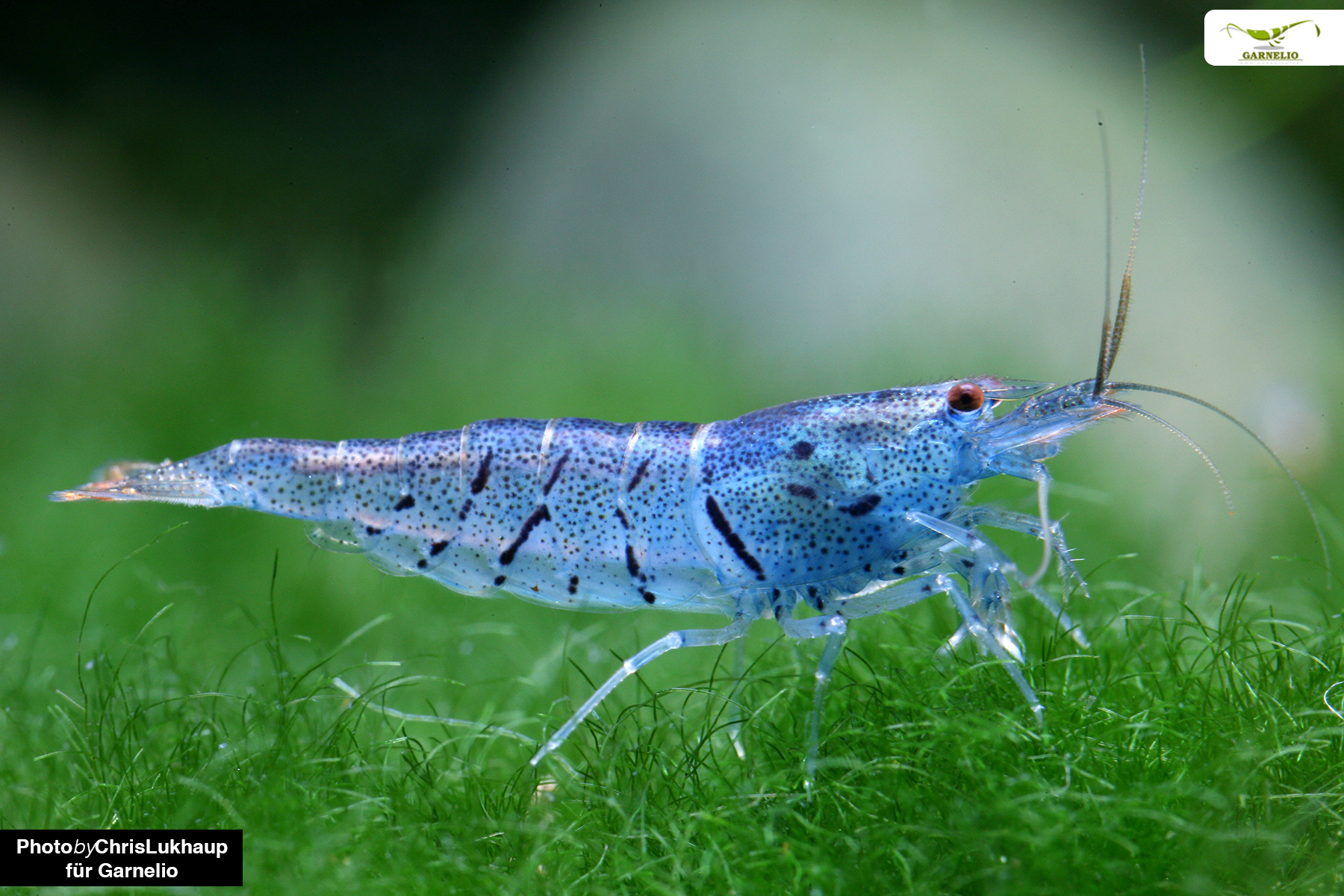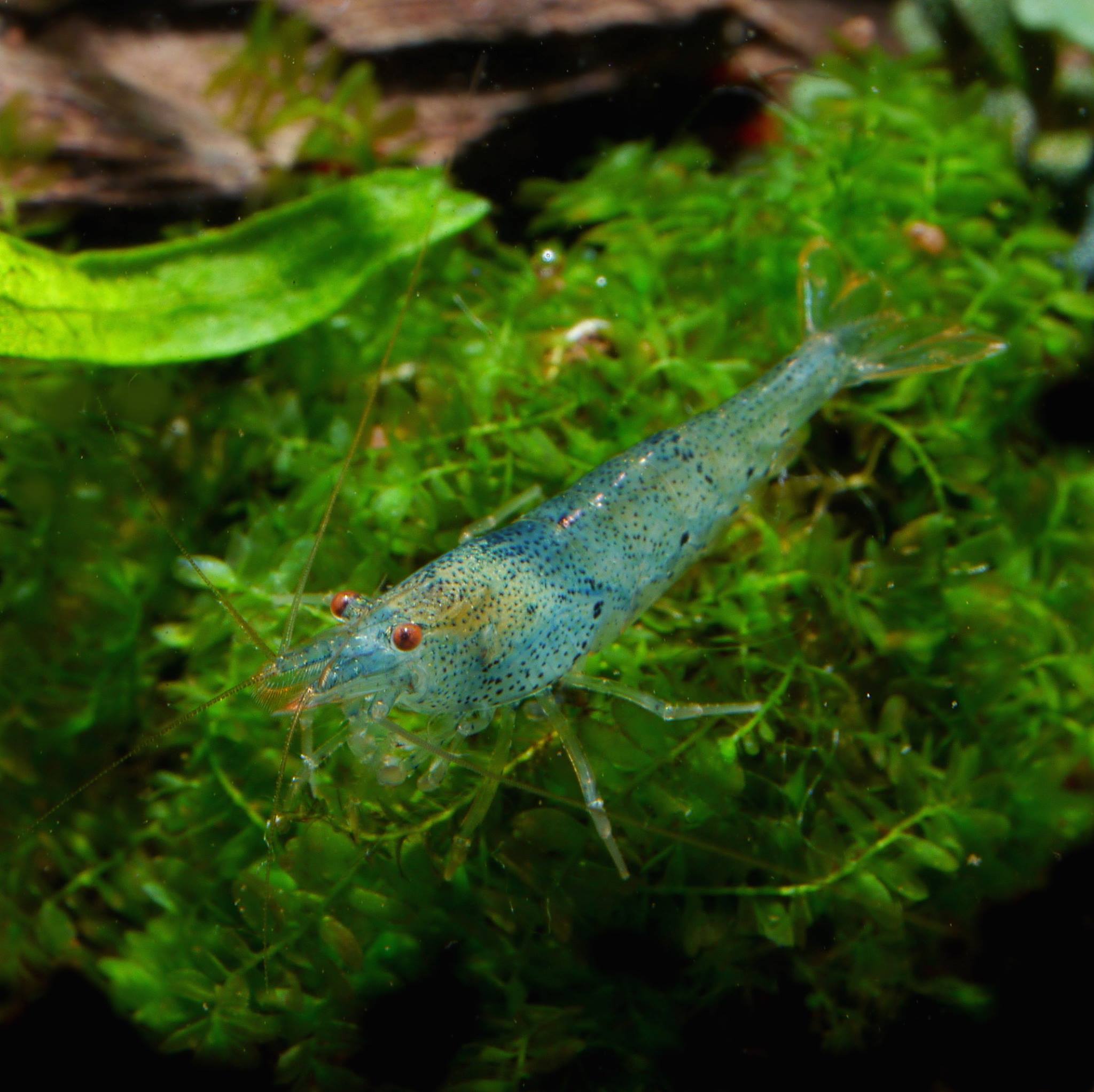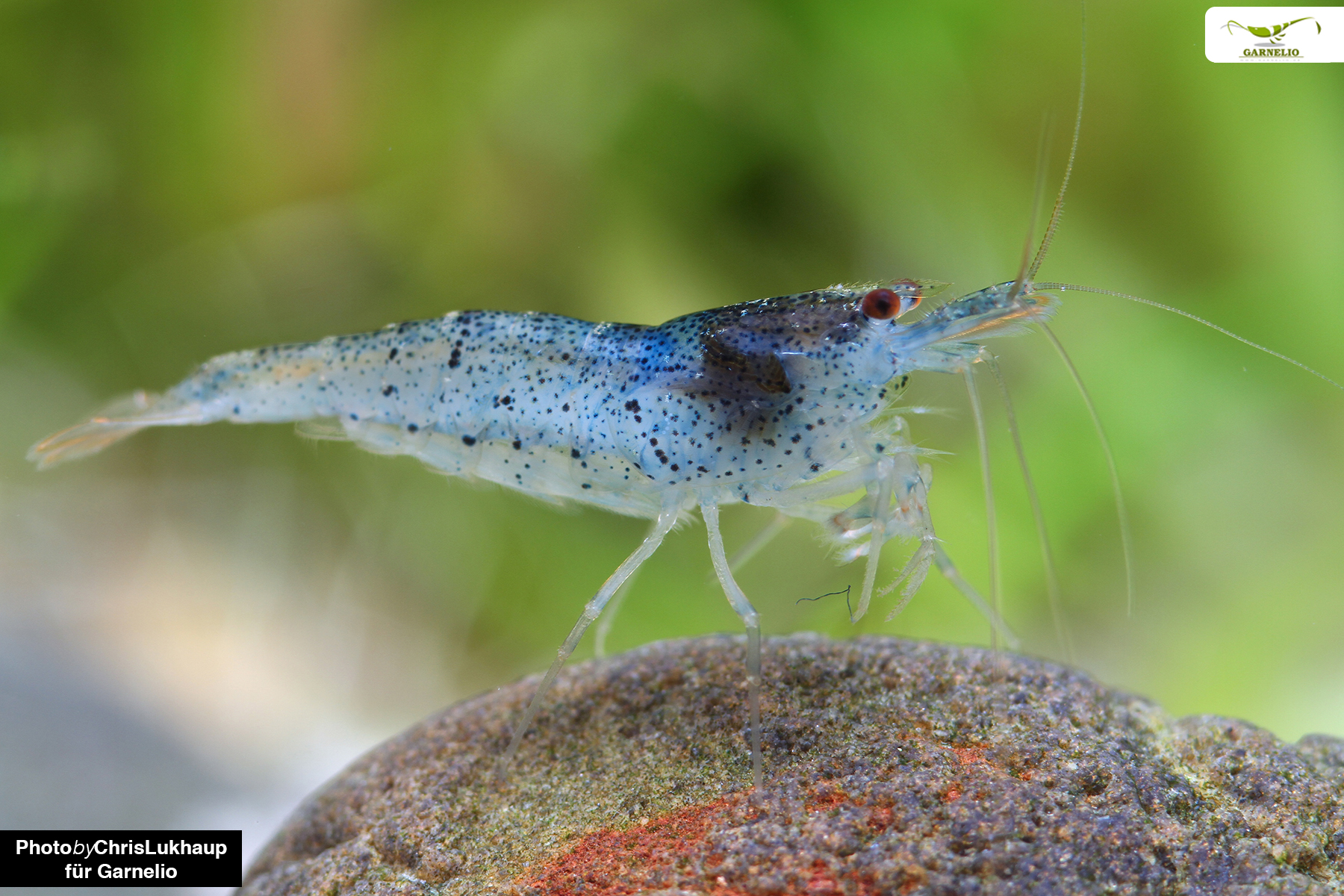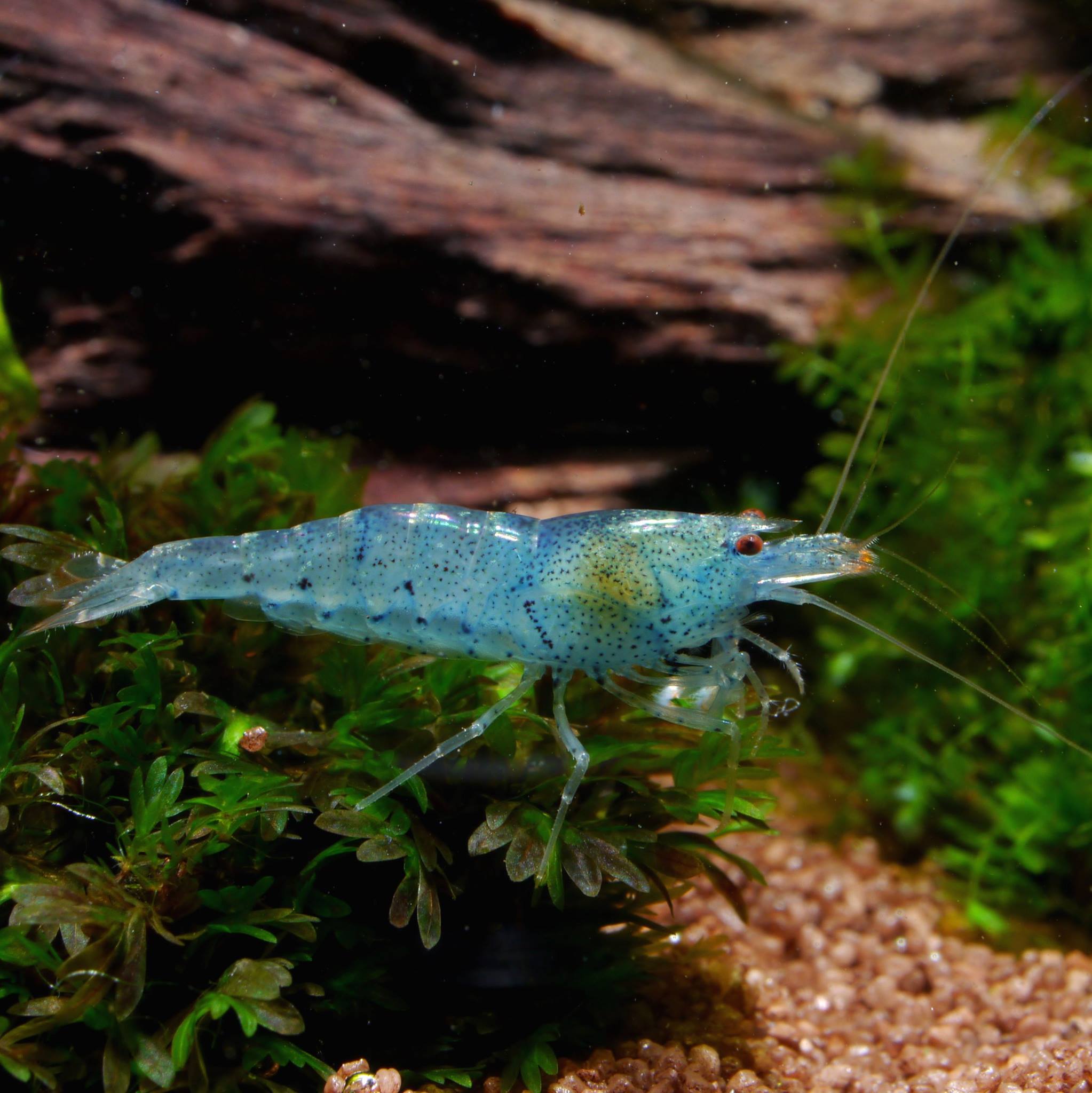A cough drop in the aquarium- the Aura Blue
Table of contents
- Where does the Aura Blue come from?
- The potential of the Aura Blue
- Breeding Aura Blues
- Keeping the Aura Blue
- Our conclusion

Where does the Aura Blue come from?
Scientifically, the Aura Blue is called Caridina serrata. And as the name "serrata" suggests, it actually comes from the spotted shrimp, which in its wild form is rather unspectacular in comparison. Monique Klaver from Holland, who recognised the potential of the spotted animals and bred out the ice-blue colour, therefore proved her breeding skills. Via detours, the Aura Blue finally reached Germany and could then be made available to the trade. They were presented to the public for the first time at the shrimp championship in 2014 and changed hands on the spot. So it is thanks to her that these beautiful specimens have finally found their way into the home aquarium.

Photo: Lou Herfurth
The potential of the Aura Blue
The Aura Blue is especially interesting for so-called crossbreeding: Caridina serrata offers an almost unbelievable genetic repertoire for crossbreeding, which makes it especially attractive among professional invertebrate breeders. Especially the mating with other Taiwanese, Panda and Blue Bolt (Caridina logemanni) results in wonderful and fascinating new colourings and one could assume that there are almost no limits to the breeding imagination, which is why further exciting crossbreeding can be expected. Monique has made the complete breeding report of Aura Blue available on www.theshrimpbar.com.
Even if it is not overly blue, the Aura Blue is one of the most attractive dwarf shrimps for the aquarium. It almost seems as if these little jewels glow from within. The blue base colour is often overlaid by unevenly distributed dark spots and sometimes a few rudimentary tiger stripes. Older animals in particular may also develop a more or less pronounced dorsal stripe, as sometimes seen in tiger shrimp. They also tend to grow a little larger, with females reaching around 4 cm and males staying a little smaller at up to 3.5 cm.

Breeding Aura Blues
Inherited, the Aura Blue presents itself in a lollipop blue, which can change depending on age and moulting preparation. For example, it shows a bright blue most intensely shortly before moulting, whereas in juvenile age it seems somewhat lighter. Even after the moulting process, it takes a short while until its colour pigments are fully consolidated again. Even though the Aura Blue belongs to the specialised reproductive type, in contrast to other Caridina species, it bears rather few eggs - just 10-20 - per year, so mass reproduction is not to be expected. Usually the gestation period is between four and six weeks, the juvenile rate averages 2 animals, apart from exceptions. It is therefore advisable to keep the Aura Blue in a species tank and to feed the young, which are usually still in situ in the first period after hatching, a baby food food.

Photo: Lou Herfurth
Keeping the Aura Blue
On an optimised bee setup with active soil, as is usually the case for Caridina species, it is relatively easy to keep, although it turns out that the Aura Blue also likes it a bit harder: at a total hardness of up to 8 °dGH, a KH of up to 2° dKH and a pH value of max. 7, it reproduces quite quickly and also shows its colourful dress. Although soft tap water would also be suitable, soft water with a mineral salt for bee shrimp that has a conductance of around 300 microsiemens has proven to be the most uncomplicated. The water temperature should not fall below 20 °C and not below 26 °C. In summer you should definitely consider an oxydator or some other form of aquarium cooling such as a Cooler cooler. The substrate should preferably be made of soil or completely natural gravel that does not adversely affect the water values.
Our conclusion
The Aura Blue caused quite a stir in the shrimp scene and has meanwhile fallen into oblivion; unfortunately, this is not surprising in view of the many colours and patterns that dominate the agenda nowadays. But it would certainly be interesting to know how many of these animals still carry the one or other Aura Blue gene under their shells. In the meantime, there are not so many breeders of this beautiful ice princess, so that she is sometimes a real rarity that is not so easy to get.
